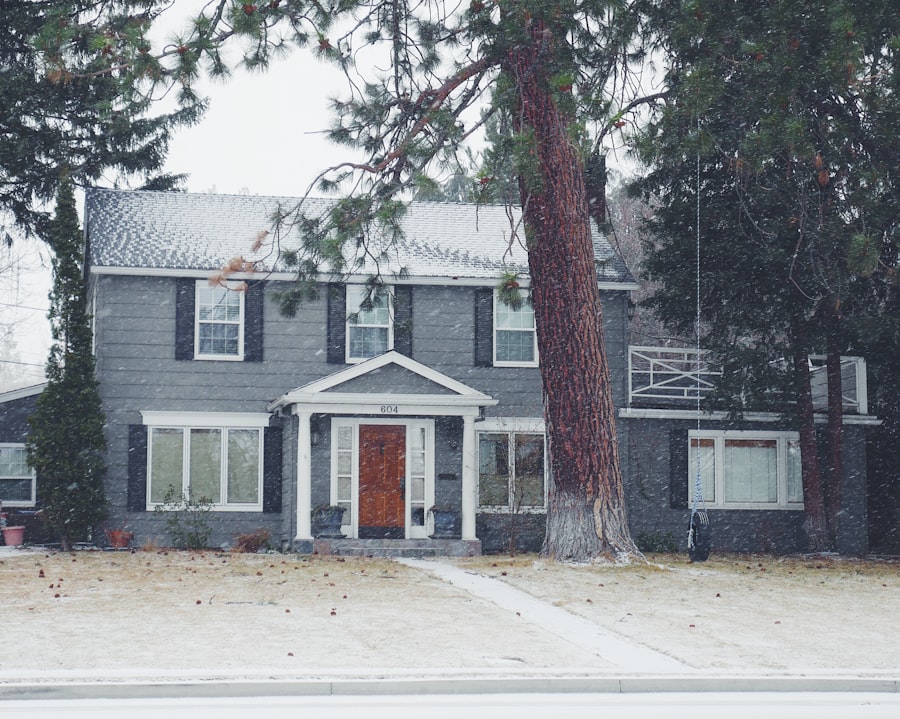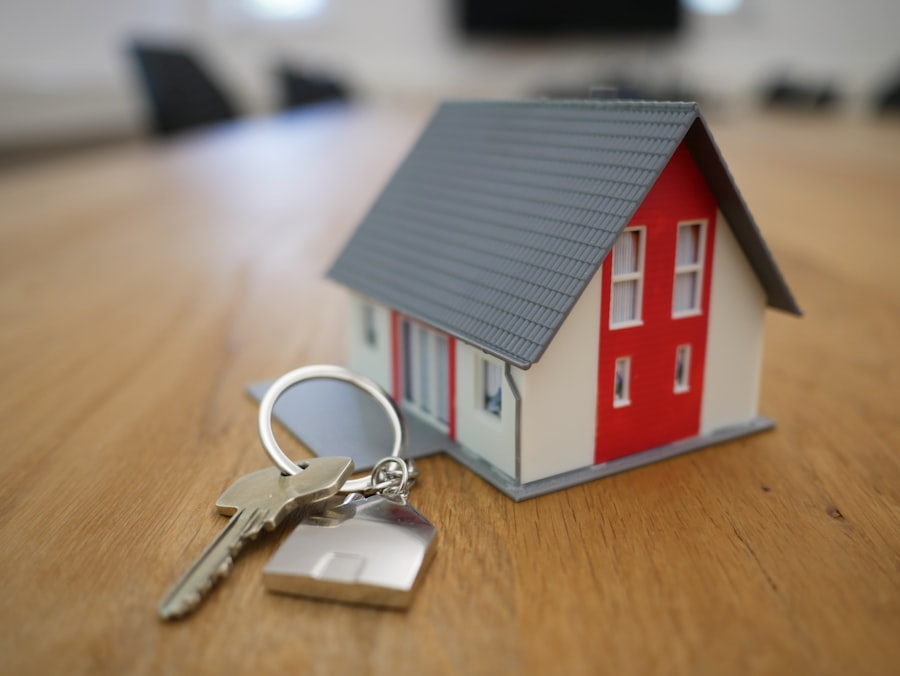In recent years, manufactured homes have gained significant traction as a viable housing option for many Americans. This surge in popularity can be attributed to a combination of factors, including rising home prices, a growing awareness of sustainable living, and the increasing demand for affordable housing solutions. Unlike traditional site-built homes, manufactured homes are constructed in a factory setting and then transported to their designated locations.
This method of construction allows for greater efficiency and cost savings, making them an attractive option for first-time homebuyers and those looking to downsize. The appeal of manufactured homes extends beyond mere affordability. Many modern manufactured homes are designed with aesthetics and functionality in mind, featuring open floor plans, energy-efficient appliances, and customizable options that cater to diverse lifestyles.
As urban areas become increasingly congested and housing shortages persist, manufactured homes offer a practical solution that can be deployed quickly to meet the needs of growing populations. Furthermore, the stigma that once surrounded manufactured housing is gradually dissipating as more people recognize the quality and craftsmanship that can be achieved in factory-built homes.
Key Takeaways
- Manufactured homes are becoming increasingly popular due to their affordability and quality construction.
- Understanding the different types of manufactured home loans can help potential buyers make informed decisions.
- Manufactured home loans offer benefits such as lower interest rates and flexible terms compared to traditional home loans.
- Qualifying for a manufactured home loan involves meeting specific criteria related to credit score, income, and the home itself.
- Securing a manufactured home loan involves gathering necessary documents, completing an application, and working with a lender to finalize the loan.
Understanding Manufactured Home Loans
Manufactured home loans are specialized financing options tailored specifically for the unique characteristics of manufactured housing. Unlike traditional mortgages, which are typically used for site-built homes, manufactured home loans can vary significantly in terms of structure, interest rates, and eligibility requirements. These loans can be secured through various channels, including banks, credit unions, and specialized lenders who focus on manufactured housing.
Understanding the nuances of these loans is crucial for potential buyers who wish to navigate the financing landscape effectively. One of the primary distinctions between manufactured home loans and conventional mortgages is the classification of the home itself. Manufactured homes can be classified as personal property or real estate, depending on whether they are permanently affixed to a foundation.
This classification impacts the type of loan available to buyers. For instance, personal property loans often come with higher interest rates and shorter terms compared to real estate loans. Additionally, buyers must consider factors such as down payment requirements, credit scores, and loan terms when exploring their financing options.
The Benefits of Manufactured Home Loans

Manufactured home loans offer several advantages that make them an appealing choice for prospective homeowners. One of the most significant benefits is affordability. Because manufactured homes are generally less expensive than traditional homes, buyers can often secure a loan with a lower down payment and monthly mortgage payments.
This affordability opens the door for individuals and families who may have been priced out of the traditional housing market due to rising home prices. Another key benefit is the flexibility that manufactured home loans provide. Many lenders offer a variety of loan products tailored to different financial situations and needs.
For example, some loans may require minimal down payments or allow for lower credit scores, making it easier for first-time buyers or those with less-than-perfect credit histories to qualify. Additionally, the speed at which manufactured homes can be constructed and financed means that buyers can often move into their new homes more quickly than they would with traditional construction methods.
How to Qualify for a Manufactured Home Loan
| Criteria | Requirement |
|---|---|
| Credit Score | Usually 620 or higher |
| Down Payment | Typically 5-20% of the purchase price |
| Debt-to-Income Ratio | Generally below 43% |
| Employment History | Stable employment for at least 2 years |
| Property Requirements | Must meet HUD standards |
Qualifying for a manufactured home loan involves several key criteria that potential borrowers must meet. Lenders typically assess factors such as credit score, income stability, debt-to-income ratio, and employment history when determining eligibility. A higher credit score can significantly improve a borrower’s chances of securing favorable loan terms, while a lower score may limit options or result in higher interest rates.
In addition to creditworthiness, lenders will also evaluate the specifics of the manufactured home itself. This includes its age, condition, and whether it meets local building codes and standards. For instance, many lenders prefer homes that are no more than ten years old and are classified as real estate rather than personal property.
Buyers should also be prepared to provide documentation such as tax returns, pay stubs, and bank statements to demonstrate their financial stability and ability to repay the loan.
The Process of Securing a Manufactured Home Loan
The process of securing a manufactured home loan typically begins with thorough research and preparation. Prospective buyers should start by assessing their financial situation and determining how much they can afford to borrow. This involves calculating potential monthly payments based on various loan amounts and interest rates.
Once buyers have a clear understanding of their budget, they can begin shopping around for lenders who specialize in manufactured home financing. After selecting a lender, the next step is to complete a loan application. This application will require detailed information about the borrower’s financial history, employment status, and the specifics of the manufactured home being purchased.
Once submitted, the lender will conduct a thorough review of the application, which may include an appraisal of the home to determine its value. If approved, borrowers will receive a loan estimate outlining the terms and conditions of the loan, including interest rates, fees, and repayment schedules.
Common Misconceptions About Manufactured Home Loans

Despite their growing popularity, several misconceptions about manufactured home loans persist in public discourse. One common myth is that manufactured homes depreciate in value like vehicles do; however, this is not always the case. While it is true that some manufactured homes may lose value over time if they are not well-maintained or if they are located in less desirable areas, many modern manufactured homes appreciate in value similarly to traditional homes when placed on permanent foundations in good neighborhoods.
Another misconception is that obtaining financing for a manufactured home is significantly more difficult than securing a mortgage for a traditional home. While there are unique challenges associated with manufactured home loans—such as stricter lending criteria or higher interest rates—many lenders are increasingly recognizing the demand for affordable housing solutions and are willing to work with borrowers to find suitable financing options. As awareness grows about the quality and potential of manufactured homes, more lenders are adapting their offerings to meet this evolving market.
The Future of Affordable Housing: Manufactured Home Loans
As housing affordability continues to be a pressing issue across the United States, manufactured home loans represent a promising avenue for addressing this challenge. With urban populations on the rise and traditional housing markets becoming increasingly saturated, manufactured homes offer a scalable solution that can be deployed quickly to meet demand. The ability to produce homes efficiently in factory settings allows for faster construction timelines compared to traditional building methods.
Moreover, advancements in technology and design have led to an increase in the quality and appeal of manufactured homes. Modern designs incorporate energy-efficient features and sustainable materials that align with contemporary consumer preferences for eco-friendly living spaces. As more individuals seek affordable housing options without sacrificing quality or comfort, manufactured homes are likely to play an increasingly vital role in shaping the future landscape of American housing.
Resources for Finding Manufactured Home Loans
For those interested in exploring manufactured home loans further, numerous resources are available to assist in navigating this specialized market. Online platforms such as LendingTree or Zillow provide tools for comparing loan offers from various lenders while allowing users to filter options based on their specific needs and financial situations. Additionally, government programs such as those offered by the Federal Housing Administration (FHA) can provide valuable information on financing options available for manufactured homes.
Local credit unions and community banks often have tailored programs designed specifically for manufactured housing financing. These institutions may offer competitive rates and personalized service that larger banks cannot match. Furthermore, consulting with real estate agents who specialize in manufactured homes can provide insights into local market conditions and help buyers identify reputable lenders who understand the nuances of financing factory-built housing.
In conclusion, as the landscape of affordable housing continues to evolve, understanding manufactured home loans becomes increasingly important for prospective homeowners seeking viable solutions in today’s market. With their affordability, flexibility, and potential for appreciation, manufactured homes represent an essential component of addressing housing shortages while providing individuals and families with quality living spaces tailored to their needs.

